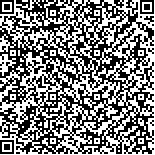王双燕,殷睿安,王培,等.重复经颅磁刺激联合运动训练对脊髓损伤大鼠运动功能及5-HT受体表达的影响[J].中华物理医学与康复杂志,2022,44(2):103-109
扫码阅读全文

|
| 重复经颅磁刺激联合运动训练对脊髓损伤大鼠运动功能及5-HT受体表达的影响 |
|
| |
| DOI:10.3760/cma.j.issn.0254-1424.2022.02.002 |
| 中文关键词: 脊髓损伤 重复经颅磁刺激 运动训练 5-HT受体 运动恢复 |
| 英文关键词: Spinal cord injury Transcranial magnetic stimulation Treadmill training Serotonin receptors Locomotor functioning |
| 基金项目:国家自然科学基金(81000853);江苏高校优势学科建设工程项目(JX10231801);江苏省科技强卫工程青年医学人才项目(QNRC2016216);东南大学基础研究支持项目,中央高校基本科研业务费专项资金资助(2242020K40172);苏州市临床医学专家团队引进项目(SZYJTD201725) |
|
| 摘要点击次数: 4607 |
| 全文下载次数: 8880 |
| 中文摘要: |
| 目的 探讨重复经颅磁刺激(rTMS)叠加运动训练对脊髓损伤大鼠运动功能及腰髓内5-羟色胺(5-HT)、5-羟色胺1A受体(5-HT1AR)、5-羟色胺2A受体(5-HT2AR)表达的影响。 方法 将50只雌性Sprague-Dawley(SD)大鼠随机分为假手术组、脊髓损伤组、运动训练组、运动后rTMS组和rTMS后运动组。采用LISA打击器建立T9不完全脊髓损伤模型,假手术组仅行椎板切除,不造成脊髓损伤。术后1周,运动训练组行跑台训练,运动后rTMS组先行跑台训练后行rTMS治疗,rTMS后运动组先行rTMS治疗后行跑台训练。跑台训练的跑台速度自60 rpm(3.6 m/min)开始,根据大鼠运动恢复情况1周内逐渐增至100 rpm(6 m/min),每次15 min,每日1次,每周5日,共8周。rTMS治疗刺激强度为最大输出强度的30%,刺激频率10 Hz,刺激5 s,间歇25 s,刺激10 min,共1000个脉冲[14],每日1次,每周5日,共8周。采用BBB评分、网格步行实验评估大鼠后肢运动功能;采用H反射(Hmax/Mmax波幅比值)评估大鼠运动神经元兴奋性;采用免疫组化检测各组大鼠损伤远端腰髓内5-HT、5-HT1AR和5-HT2AR表达情况。 结果 术后第7、8、9周,rTMS后运动组BBB评分均显著高于脊髓损伤组(P=0.019;P=0.01;P=0.018);术后第9周,rTMS后运动组BBB评分明显高于运动训练组(P=0.023);术后第8、9周,运动后rTMS组BBB评分高于脊髓损伤组(P=0.044,P=0.018)。术后第7周和第9周,rTMS后运动组网格步行跌落次数显著少于脊髓损伤组(P=0.034;P=0.01);术后第9周,运动后rTMS组跌落次数明显少于脊髓损伤组(P=0.035)。术后第5周和第9周,脊髓损伤组的Hmax/Mmax波幅比值显著高于假手术组(P=0.001,P=0.004)和rTMS后运动组(P=0.04,P=0.005);术后第9周,运动后rTMS组Hmax/Mmax波幅比值明显低于脊髓损伤组(P=0.025)。免疫组化结果显示,联合治疗组5-HT表达明显高于脊髓损伤组(P<0.05);联合治疗组的5-HT1AR表达均显著高于脊髓损伤组和运动训练组(P<0.05)。与其他4组相比,脊髓损伤组的5-HT2AR表达显著增多(P<0.05)。 结论 rTMS联合运动训练可促进不完全性脊髓损伤大鼠运动恢复,增加远端腰髓5-HT含量,促进5-HT1AR和5-HT2AR差异化表达。 |
| 英文摘要: |
| Objective To explore the effect of combining repetitive transcranial magnetic stimulation (rTMS) with treadmill training in treating spinal cord injury (SCI). Methods Fifty female Sprague-Dawley rats were randomly divided into a sham-operation (C) group, an SCI group, a treadmill training (TT) group, a treadmill training followed by rTMS (TR) group and an rTMS followed by treadmill training (RT) group. The C group only underwent laminectomy without spinal cord injury, while the model of T9 incomplete spinal cord injury was established in the other groups using the Louisville Injury System Apparatus impactor. One week after the operation the TT began. The TR group received rTMS immediately after the treadmill training and the RT group received it before. The treadmill′s speed started at 3.6m/min and gradually increased to 6m/min within 1 week. There was one 15min session a day, 5 days a week, for 8 weeks in total. The rTMS intensity was 30% of the maximum output intensity at 10Hz in 5s bursts with an interval of 25s. It lasted 10min, for a total of 1000 pulses. Hind limb motor functioning was evaluated using the Basso, Beattie & Bresnahan (BBB) locomotor rating scale and a grid walking test. The Hmax/Mmax ratio was used to quantify the excitability of the motor neurons. Immunohistochemistry was employed to detect the expression of 5-hydroxytryptamine (5-HT), 5-hydroxytryptamine 1A receptor (5-HT1AR) and 5-hydroxytryptamine 2A receptor (5-HT2AR). Results The average BBB scores of the RT group were significantly higher than the SCI group′s averages from the 7th to 9th week after the injury. At the ninth week the average BBB score of the RT group was significantly higher than the TT group′s average. At the eighth and ninth week the average BBB scores of the TR group were significantly higher than in the SCI group. The number of drops in the RT group was significantly lower than in the SCI group at the seventh and ninth week. At the ninth week, the number of drops of the TR group was significantly lower compared with the SCI group. The Hmax/Mmax ratio of the SCI group was significantly higher than in the C and TR groups at the fifth and ninth week, while that of the TR group was significantly lower than the SCI group′s ratio at the ninth week. The expression of 5-HT, 5-HT1AR and 5-HT2AR in the RT and TR groups was significantly higher than in the SCI group, and the relative 5-HT1AR density of the RT and TR groups was significantly higher than in the SCI and TT groups. Compared with the other 4 groups, the expression of 5-HT2AR in the SCI group had increased significantly. Conclusions Combining rTMS with treadmill training can significantly promote the recovery of locomotor function after incomplete spinal cord injury. |
|
查看全文
查看/发表评论 下载PDF阅读器 |
| 关闭 |